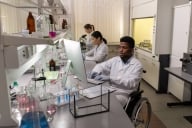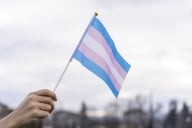You have /5 articles left.
Sign up for a free account or log in.
One day last fall, a student I’ll call Kate raised her hand and asked, “What about Charlottesville?” Kate was responding to our discussion on countercultures through the example of 1980s drag shows in Harlem.
I fell back on my training and played it safe. “I’m not sure how the professor would answer that, so can you make it a point to ask him next lecture?”
Kate pursed her lips but nodded, and I saw other students’ shoulders slump as they realized I was dodging the sticky topic. As a teaching fellow for Introduction to Sociology, and as a critical race theorist, I’m well aware that being outspoken in the classroom can lead to career repercussions. Kimberly Kay Hoang notes that sociology as a discipline has struggled to balance public, activist work with the desire to remain an objective and detached social science. When sociologists prioritize validation from within a small network of academics over unpacking the implications of our research for a broader audience, we dramatically reduce the worth of our research.
My research is focused on the role of race and racism in organizing neighborhoods and communities, and ultimately, that work needs to be accessible and available to people outside the academy. Therefore, my pedagogy is grounded in a community ethic, and I’m willing to trade being seen by some as nonobjective for making my work accessible. When Kate asked about Charlottesville, Va., my first reaction was to try to protect myself, but that thinking reinforces sociology as a detached discipline rather than one that actively engages with the public and current events.
Drawing on Michael Omi's and Howard Winant's and Eduardo Bonilla-Silva’s work, I explained that while the mechanisms of white dominance have changed since the civil rights movement, that white hegemony remains and manifests in the colorblind laws that shape the political landscape without necessitating overtly racist language and force. Therefore, while the overt violence of Charlottesville is definitely counter to norms of white civility, it’s more accurate to describe the march as a manifestation of the ruling ideas as opposed to a countermovement. White nationalism still organizes American life. Arguments that the marchers in Charlottesville represented a counterculture fall apart when considering African-Americans’ and immigrants’ lack of power.
Kate nodded, but her lips were still pursed and the skin around her eyes was tight. Still, while I was worried that my white students would complain that I was biased because I am black, I didn’t see another way to approach the question. Arguing the march in Charlottesville could be theorized as a counterculture felt to me to be reducing the gravity of the organized demonstration of white supremacist hate. Perhaps because my class was overwhelmingly white, they wanted me to affirm their own boundary work, to assure them that the problem wasn’t whiteness as a structure per se but a small group of people. Whiteness scholarship has contended that when encountering dialogue about race, white people are likely to express anger and frustration, deny the existence of racism, and distance themselves from their systemic advantage by explaining that they are not racist at the interpersonal level. Robin DiAngelo calls this anxiety “white fragility,” and it poses a major teaching challenge because, especially when coming from me, their black teaching fellow, it leads to quiet frustration.
Kate’s discomfort also reflects the reality that many white people were repulsed by the march in Charlottesville last summer. While many white liberals were challenged to reconsider the role of race in society in the wake of Obama’s election and the emergence of Black Lives Matter, the overt, violent and vocal racism of those who marched is distinct in its organization. For white people who consider themselves to be liberal, who vote for Democratic candidates and who have been taught to be kind across cultural differences, the march at Charlottesville revealed the enduring salience of racism in American life.
Troy Duster, in explaining how white advantage works, explains that it’s much like water. As a fluid, H2O can freeze, boil or remain in a liquid state, but regardless of its temperature, it is still water. By situating Charlottesville’s marchers within the historical trajectory of the country, I invited my students to grapple with the variation in displays of whiteness without reducing the Charlottesville march to an unrelated display of white racism. Thinking about white privilege existing in different states, much like H2O, it’d be more accurate to think about Charlottesville as the boiling point of whiteness as a structure than as something new.
While I think about this often, I was concerned with sociology’s passive approach to political events, especially after that class. W. E. B. Du Bois refused to accept the role of the removed and objective scientist. As Aldon D. Morris documented in The Scholar Denied, Du Bois advanced a politically risky research agenda that demonstrated the social construction of race, publicly renounced the work of white mainstream sociologists like Robert Park, and was actively involved in the NAACP and other community-based organizations. In “My Evolving Program for Negro Freedom,” Du Bois explained that “the social scientist could not sit apart and study in vacuo; neither on the other hand, could he work fast and furiously by intuition and emotion.” While Du Bois thought the research of social scientists was crucial to creating a better world, he also believed that work produced in the ivory tower without connection to the rest of the social world would fail to have any importance or influence.
Teaching moves a lot faster than our research does, and our students who are looking to understand the current political events and social upheaval will want answers faster than they can find them in a book or a journal article. Relying upon critical race theories can allow us to help our students connect current manifestations of racism to their historical roots. That is riskier, however, for sociologists whose work already exists on the margins or for those scholars whose perspectives are assumed to be biased and subjective. At the moment, balancing the risks and rewards of grappling with processes in real time as they unfold is our discipline’s greatest teaching challenge.




